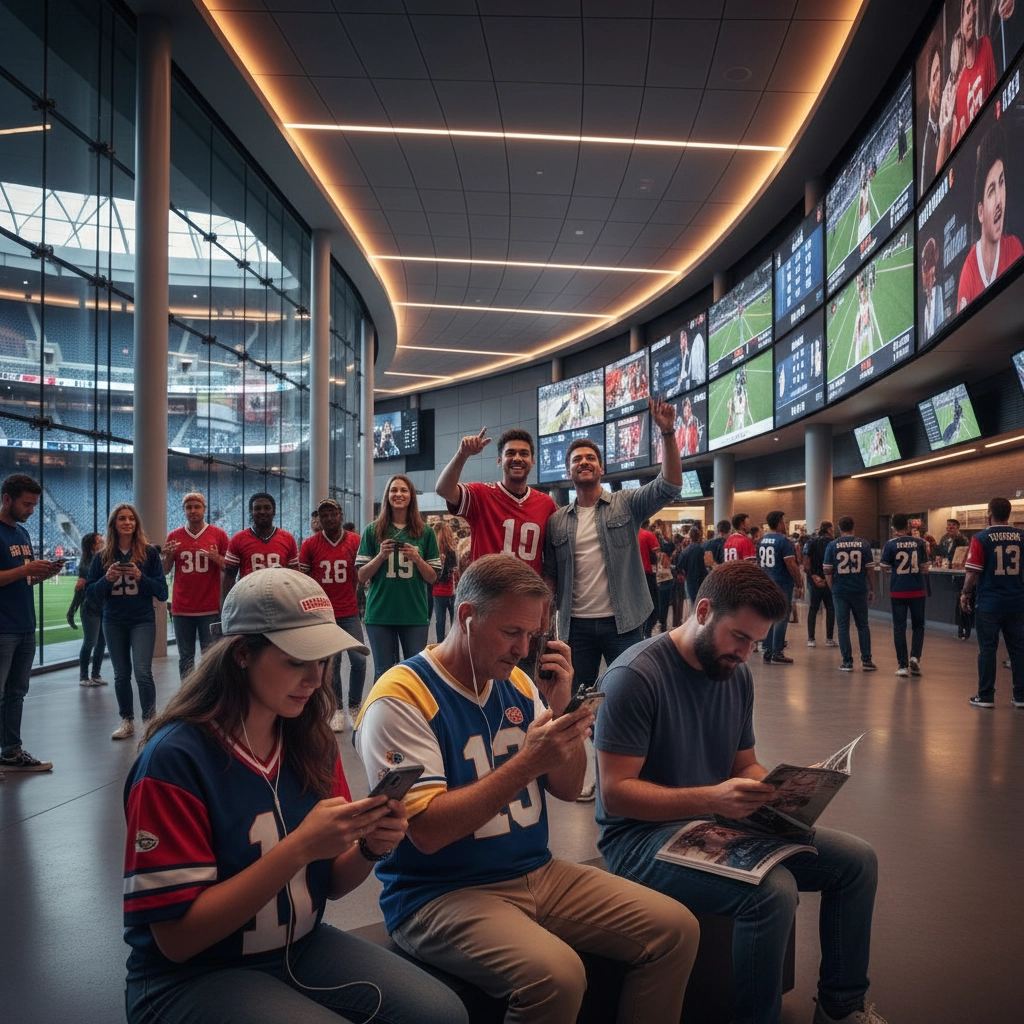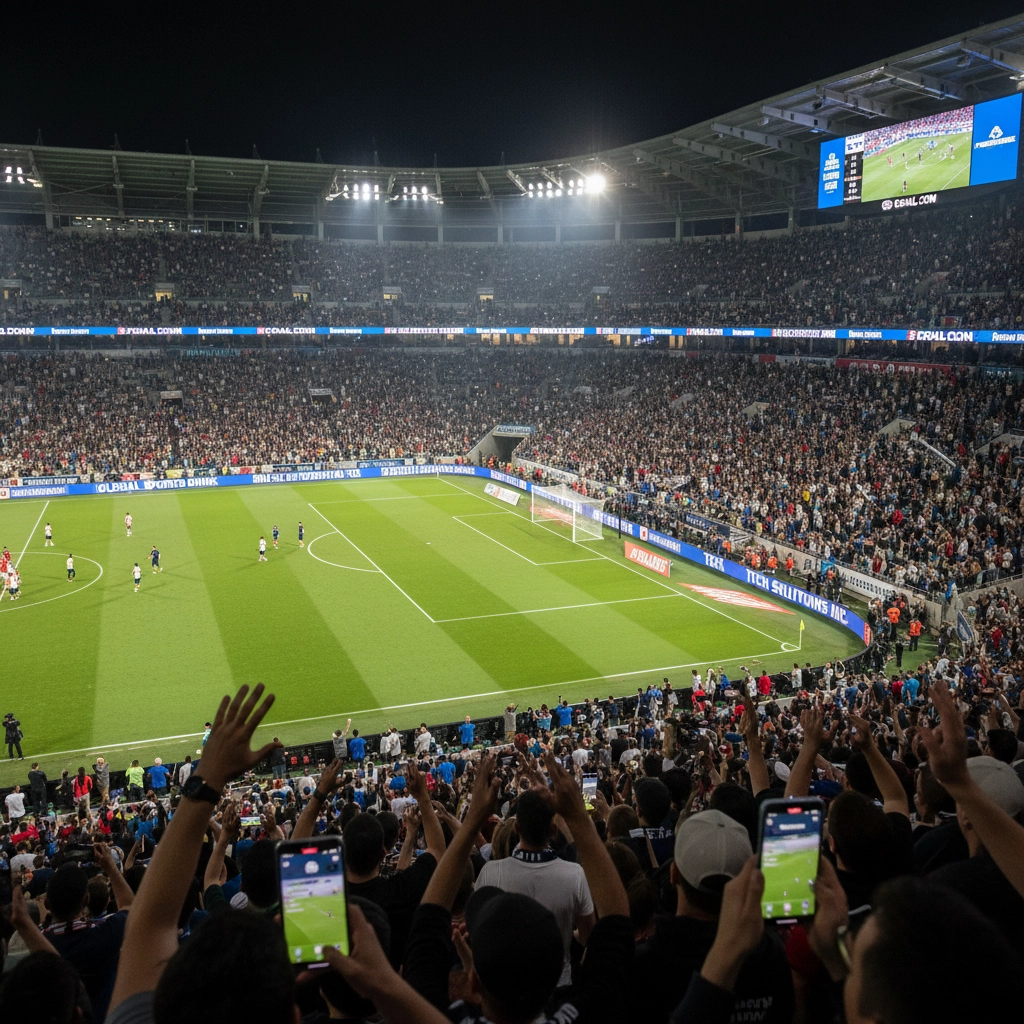Sports marketing isn't just about slapping your logo on a jersey anymore. Today's winning campaigns require a coordinated approach that spans multiple channels, creates authentic connections, and delivers measurable results. If you're ready to build campaigns that actually move the needle, this guide will show you exactly how to do it.
What Makes an Integrated Sports Marketing Campaign
Think of integrated sports marketing as conducting an orchestra. Every instrument: TV, digital, radio, print, and in-venue experiences: must play in harmony to create something memorable. You're not just buying individual advertising spots; you're creating a unified brand experience that follows your audience wherever they consume sports content.
The key difference between scattered advertising efforts and integrated campaigns lies in strategic coordination. When your TV commercial reinforces the same message as your stadium signage, which connects to your social media content, which drives traffic to the same landing page: that's when you see exponential returns on your investment.

Building Your Multi-Channel Foundation
Television: Still the Heavy Hitter
Television remains your primary reach driver, but approach it strategically. Don't just buy random sports programming: analyze viewership data to understand when your target demographic is most engaged. Live sports content offers unique advantages: captive audiences, emotional investment, and real-time social media amplification.
Coordinate your TV spots with live game moments. Schedule commercials during natural viewing breaks, and ensure your creative reflects the energy and passion of the sporting event. Remember, sports fans are different from general TV audiences: they're more engaged, more emotional, and more likely to take immediate action.
Digital: Where Engagement Lives
Your digital strategy must go beyond basic banner ads. Create platform-specific content that feels native to each environment. Twitter works for real-time commentary and quick updates. Instagram and TikTok excel at behind-the-scenes content and athlete partnerships. LinkedIn connects with business decision-makers attending corporate sporting events.
Build dedicated landing pages for each campaign component. When someone clicks from your TV commercial QR code, your stadium signage, or your social media post, they should land on a page specifically designed for that touchpoint. This approach dramatically improves conversion rates and provides cleaner tracking data.
Radio: The Commute Companion
Radio advertising works exceptionally well for sports campaigns because it captures audiences during their daily routines. Sports talk radio, especially, reaches highly engaged fans who influence purchasing decisions within their social circles.
Time your radio spots strategically around game days and sports news cycles. Create sponsorship opportunities around sports talk shows, where your brand becomes part of the conversation rather than an interruption.

Print: Credibility and Depth
While digital dominates attention, print advertising in sports publications and local newspapers still carries significant weight. Sports fans trust printed content differently: they see it as more credible and authoritative.
Use print to tell deeper stories that digital formats can't accommodate. Feature detailed case studies, comprehensive player statistics, or in-depth analysis that positions your brand as knowledgeable and committed to the sport.
In-Venue: The Ultimate Experience
Stadium and arena advertising offers unmatched engagement opportunities. Your audience is captive, emotional, and primed for brand experiences. But don't waste this opportunity on static signage alone.
Create interactive elements that encourage audience participation. Design activations that work during game breaks. Coordinate with venue staff to ensure your brand integration feels seamless rather than intrusive.
The Strategic Planning Process
Phase One: Audience and Opportunity Analysis
Start by mapping your target audience across different sports properties. Which teams do they follow? What games do they attend? How do they consume sports content throughout the week?
Analyze external factors that could impact your campaign timing. Major sporting events, playoffs, trade deadlines, and off-season periods all affect audience attention and engagement levels. Plan your campaign calendar around these natural peaks and valleys.
Phase Two: Partnership Development
Identify strategic partners who share your target audience but don't compete directly with your offerings. These partnerships amplify your reach without diluting your message.
Negotiate partnership terms that benefit all parties. The best sports marketing partnerships create value that exceeds the sum of individual efforts. Look for opportunities to cross-promote, share content, and coordinate timing for maximum impact.

Content Creation and Messaging Strategy
Develop Modular Creative Assets
Create content that works across multiple platforms while maintaining consistent messaging. Your 30-second TV spot should translate into 15-second social media clips, radio scripts, and print advertisements without losing impact.
Design your creative assets modularly. Develop core messages, key visuals, and call-to-action elements that can be recombined for different platforms while maintaining brand consistency.
Storytelling That Connects
Sports fans respond to authentic stories that reflect their passion. Don't just talk about your product features: connect them to the emotions and experiences that sports create.
Focus on relatable scenarios that your audience experiences regularly. The pre-game anticipation, the post-victory celebration, the community feeling of shared fandom: these emotional touchpoints create stronger brand connections than product specifications ever will.
Implementation and Coordination
Launch Timing and Sequencing
Coordinate your channel launch timing for maximum impact. Don't release everything simultaneously: create a planned sequence that builds momentum over time.
Start with awareness-building channels (TV, radio) before transitioning to engagement-focused platforms (digital, social). End with conversion-driving activities (in-venue activations, special offers) when audience interest peaks.
Cross-Channel Message Reinforcement
Ensure each touchpoint reinforces your core message while providing channel-appropriate value. Your TV commercial introduces the concept, your digital content provides deeper engagement, your radio spots reinforce key messages, and your in-venue presence creates memorable experiences.
Avoid simple message repetition: instead, build progressive narrative that develops across channels. Each touchpoint should add new information or perspective while supporting your overall campaign objectives.

Measurement and Optimization
Set Up Comprehensive Tracking
Implement tracking systems before launching your campaign. Use unique URLs, promotional codes, and attribution tags for each channel to understand performance accurately.
Monitor both direct response metrics and brand awareness indicators. Sports marketing campaigns often generate delayed responses as fans research before purchasing. Track assisted conversions and brand lift studies alongside immediate response metrics.
Real-Time Performance Monitoring
Sports marketing campaigns benefit from real-time adjustments. Game outcomes, player performances, and breaking sports news can all impact your campaign effectiveness.
Establish protocols for rapid response to unexpected events. Positive game outcomes might warrant increased spending in that market. Negative events might require message adjustments or temporary pausing.
Data-Driven Decision Making
Use performance data to optimize budget allocation across channels. Identify which combinations produce the strongest results and adjust spending accordingly.
Test different message variations and creative approaches systematically. Sports audiences often respond differently to various appeals, so continuous testing helps identify the most effective approaches.

Common Integration Mistakes to Avoid
Never assume that running ads across multiple channels automatically creates integration. True integration requires strategic coordination of messaging, timing, and audience experience.
Don't neglect mobile optimization. Sports fans increasingly consume content on mobile devices, especially during live games. Ensure all your digital touchpoints work flawlessly on smartphones and tablets.
Avoid generic sports marketing approaches that could apply to any brand. Your integration strategy should reflect your specific value proposition and target audience characteristics.
Making It Work for Your Business
Start with a pilot campaign focusing on one sport or team before expanding. Test your integration approach on a smaller scale to identify what works before committing larger budgets.
Choose sports properties that align naturally with your brand values and customer demographics. Authentic connections produce better results than forced associations with popular teams or athletes.
Remember that successful integrated sports marketing campaigns require sustained effort and investment. Single-event activations rarely produce lasting impact. Plan for multi-touch campaigns that build relationships over time.
Your integrated sports marketing campaign succeeds when every touchpoint works together to create a unified brand experience. Focus on strategic coordination, authentic storytelling, and continuous optimization. The results will justify the additional planning effort required to execute truly integrated campaigns.


Recent Comments